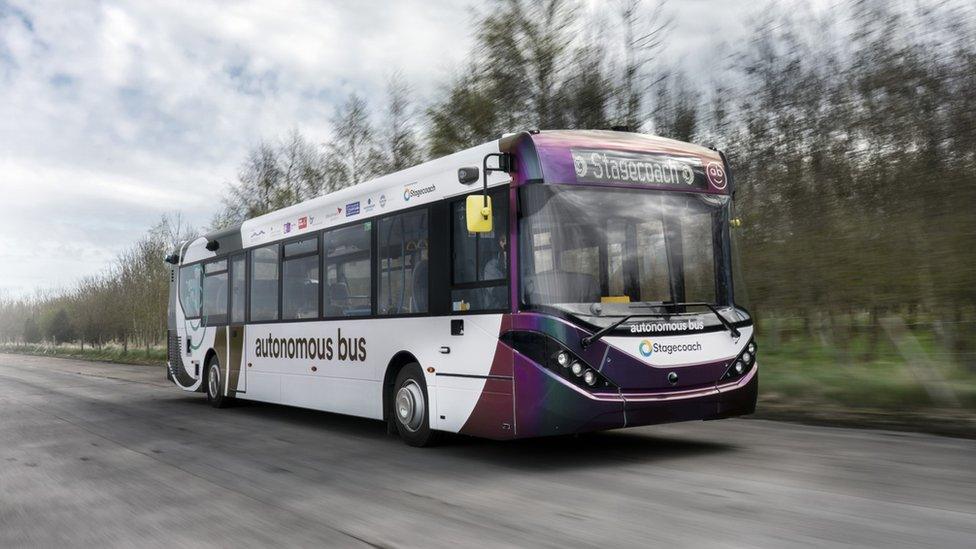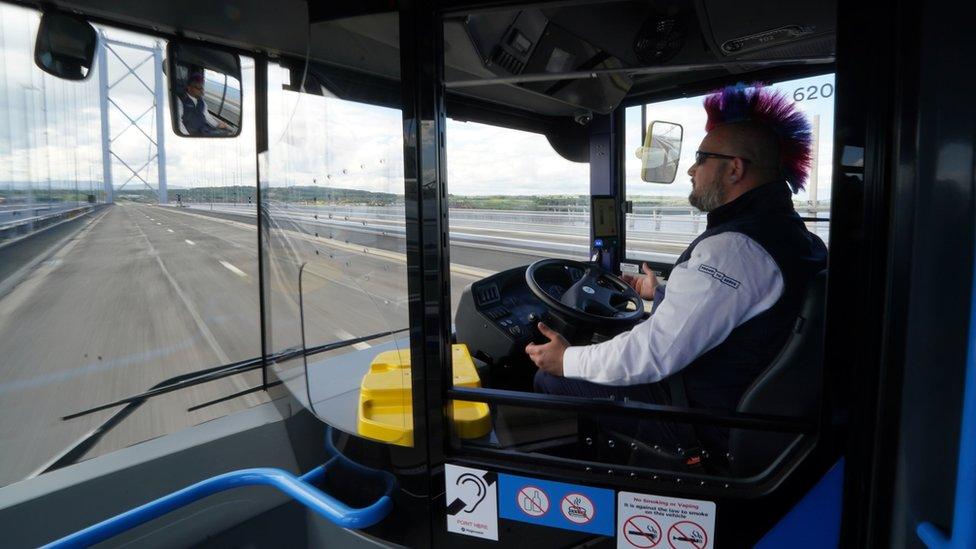World's first 'driverless bus' service starts in Scotland
- Published
- comments
The BBC got a sneak peek on board one of the buses ahead of the launch - take a look!
Passengers in Scotland will be able to ride what's believed to be the world's first automated buses from Monday 15 May.
It's a trial called Project CAVForth, which is is being run by bus company Stagecoach and is funded by the UK government.
They said it would be the world's first full-size, self-driving public bus service.
The vehicles - sometimes known as robot buses - will be driven by computers, with the help of sensors, on the AB1 route in East Scotland.
But there will also be someone behind the wheel, ready to take over if anything goes wrong

The sensors can see everything that's going on around the buses, even in bad weather
The fleet of five Alexander Dennis Enviro200AV buses will be able to carry up to 10,000 passengers a week.
It'll travel over the Forth Road Bridge into Edinburgh, making it the biggest trial of its kind according to Stagecoach.
The 14 mile route between Ferrytoll park and ride in Fife and Edinburgh Park train and tram interchange will take 25-30 minutes .
How do they work?

There will always be someone behind the wheel, ready to take over if anything goes wrong
10 sensors are attached around the outside of the bus, and these detect when the bus needs to turn, or if there's something obstructing the road.
For an extra layer of safety, a driver will be in the drivers seat of all the buses to intervene if anything goes wrong, but for the most part their hands will be off the steering wheel.
There will also be a 'bus captain' who will be in charge of making sure everyone's got a ticket.
Steve Russell from Stagecoach told the BBC that the buses can drive in "mixed traffic at speeds of up to 50 miles per hour".

The buses will cross this bridge on its route
He continued: "We've done an array of testing to make sure it's safe for members of the public to get on board.
"If you're not thinking about the safety driver, it just feels like a normal bus."
- Published20 August 2022

- Published30 August 2017

